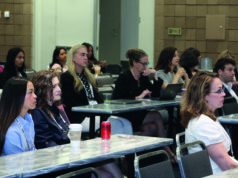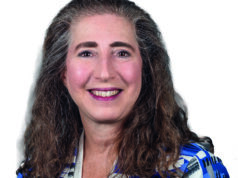
On June 12, 2019, the director of the National Institutes of Health, Francis Collins, MD, made a public commitment to decline to take part in panels that “do not fairly evaluate scientists of all backgrounds for speaking opportunities.”1 Collins referred to “manels,” a term describing all-male speaking panels.
When taken to the extreme, the result is a “manference”—an entire conference composed of male speakers. If you think these are rare events, think again. In a study examining 98 medical conferences, representing 20 specialties held during 2017 and 2018, 36.6% of 5,409 panel sessions were manels and only four of the 98 conferences did not have a single manel.2
So what’s the big deal?
The proportion of women in all Accreditation Council for Graduate Medical Education (ACGME)-accredited residency programs in 2016 was 44%, whereas the proportion of women in vascular surgery training programs was 33%.3 Women comprise a minority (18.6%) of academic vascular surgery faculty, with only 6.8% of women holding vascular surgery division chief positions compared to 13.7% of men. The proportion of women vascular surgeons who hold the rank of full professor is half that of men (10.7% vs 26.2%).2
As long as women continue to be underrepresented in public-facing forums, we continue to broadcast to students and trainees that women are not welcome in vascular surgery—and women cannot achieve their goals as vascular surgeons. Manels are a symptom of the underlying disparity in that it is easy to tap the men who constitute the majority of vascular surgeons, academic vascular surgery faculty and leadership.
At the same time, manels are the disease in that they send a message that “you must look like this to be a vascular surgeon,” particularly a vascular surgeon that is considered an expert. This discourages young people to pursue vascular surgery, and junior faculty to pursue certain subspecialties—such as aortic surgery—that may be less inclusive. Further, speaking invitations are a major part of the currency required to achieve academic promotion, leadership positions, industry partnerships, research opportunities and future speaking invitations. When speaking invitations only go to men, the cycle of underrepresentation and disparity is perpetuated.
How did we get here?
In the 1900s, medicine was considered a “high status” occupation with systematic discrimination against women.4 In 1970, the Women’s Equity Action League filed a class action lawsuit against every U.S. medical school alleging abuses in admissions.
Consequently, affirmative action resulted in an increase in women enrolled in medical schools. What followed was a phenomenon called occupational segregation, in which women are pushed to work in specialties perceived as acceptable for women (such as pediatrics or family practice) while other specialties (such as surgery) were regarded as the domains of men.5
Why does this keep happening?
Additional well-described psychosocial phenomena perpetuate the creation of manels. The “Matthew/Matilda effect” is a bias against acknowledging the achievements of women scientists, whose work is instead attributed to male colleagues, leading to undervaluation of women’s accomplishments.6 Maternal bias is the assumption that women are less competent and less committed to their careers because they are preoccupied by children and family, and thus not interested in speaking.
The “backlash effect” is the visceral response to a perceived violation of expected gender norms (women entering “masculine” specialties). This manifests in the “competence-likability trade-off,” where men are more well-liked when they are successful but the opposite is true for women. And who’s going to invite someone that’s not well-liked to speak on a panel?
How do we fix it?
Organizers: Starting with a diverse group of organizers has been shown to increase the diversity of speakers. Organizers should commit to creating panels with representation of experts from all backgrounds. This can require more effort on the organizers’ part than is typically afforded. As Ellen Dillavou, MD, associate professor of vascular surgery at Duke University School of Medicine in Durham, North Carolina, tweeted, “Sometimes you need to dig deeper than your speed dial.”
Organizers, in a rush to address diversity, will sometimes add a woman as a moderator, or have one woman among 10 men panelists.
This is “tokenism,” and it doesn’t undo a manel. While one woman technically makes it not an all-male panel, what we are striving for is not just circumventing a technicality, but a panel representative of all the experts in the field.
Further, tokenism can be harmful when it places an individual in a very visible position and asks them to present outside their area of expertise. This places the speaker in a position of potential weakness and strengthens the argument that there are no women or diverse experts.
Responsibility
Speakers: Before agreeing to a speaking invitation, inquire about representation on the panel. If there is not adequate representation, decline the invitation and make the reasons clear to the organizers. Even better, suggest a woman or another individual that would increase the diversity of the panel to take your place.
Attendees: When you receive an invitation to attend a manel, decline the invitation and make the reasons clear to the organizers. For program directors and other leaders, when asked to distribute an invitation to a manel to your trainees or your colleagues, decline to distribute and again make the reasons clear.
Women in vascular surgery are acutely aware of the disparities, and, as a result, we work extra hard to prove we’re worth our salt. Next time you’re organizing a panel, make the savvy choice of a woman vascular surgeon. Trust me, she will give a spectacular talk that you haven’t already heard 12 times before—and you’ll be delighted.
REFERENCES
- Rubin R. NIH Director Takes Stand Against “Manels”. JAMA 2019;322:295.
- Arora A., Kaur Y., Dossa F., Nisenbaum R., Little D., Baxter N.N. Proportion of Female Speakers at Academic Medical Conferences Across Multiple Specialties and Regions. JAMA Network Open 2020;3:e2018127–e.
- Shin S.H., Tang G.L., Shalhub S. Integrated residency is associated with an increase in women among vascular surgery trainees. J Vasc Surg 2020;71:609–15.
- Walsh M.R. Doctors wanted: No women need apply: Sexual barriers in the medical profession, 1835–1975. 1977.
- Bergmann B.R. The economic risks of being a housewife. The American Economic Review 1981;71:81–6.
- Silver J.K., Slocum C.S., Bank A.M., et al. Where Are the Women? The Underrepresentation of Women Physicians Among Recognition Award Recipients From Medical Specialty Societies. PM & R : Journal of Injury, Function, and Rehabilitation 2017;9:804–15.
Karen Woo, MD, is associate professor of surgery at the University of California, Los Angeles (UCLA). She is also associate director of the Vascular Low Frequency Disease Consortium.












It is happening to me right now in my job